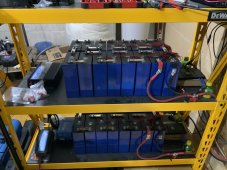Hi All,
I would like to play with solar at home without messing with the grid, existing wiring, and huge investments. I’m going to install a small (about 600W) off-grid system with the battery and power up a mini-fridge and a desktop PC. So, loads are powered by panels during the day and by the battery during the night. However, I would also like to have the possibility to plug a controller into the outlet, so in case of bad weather, it’s able to switch to the grid and keep loads powered.
The main requirement is reliability. I would like to use only more or less wide-spread components that have been on the market for a while.
When you hear about a project like this, solar generators are the first that come to mind, but unfortunately, I’m not aware of any particular models that can work in this way. Some generators can work in pass-through mode, but they won’t use the battery until the grid is off. And they cannot be connected to the grid and panels simultaneously.
I also found this device on Amazon https://www.amazon.com/dp/B09PQL8KWH. It fits the purpose but it’s too exotic. I’m not ready to experiment with the high-voltage device with just 8 reviews.
Could somebody please advise any other option? The all-in-one solution would be perfect, but I’m ready to build the system from the components. It’s easy to find an inverter and MPPT controller, but what I'm really missing is a device that can draw power from the grid automatically.
I would like to play with solar at home without messing with the grid, existing wiring, and huge investments. I’m going to install a small (about 600W) off-grid system with the battery and power up a mini-fridge and a desktop PC. So, loads are powered by panels during the day and by the battery during the night. However, I would also like to have the possibility to plug a controller into the outlet, so in case of bad weather, it’s able to switch to the grid and keep loads powered.
The main requirement is reliability. I would like to use only more or less wide-spread components that have been on the market for a while.
When you hear about a project like this, solar generators are the first that come to mind, but unfortunately, I’m not aware of any particular models that can work in this way. Some generators can work in pass-through mode, but they won’t use the battery until the grid is off. And they cannot be connected to the grid and panels simultaneously.
I also found this device on Amazon https://www.amazon.com/dp/B09PQL8KWH. It fits the purpose but it’s too exotic. I’m not ready to experiment with the high-voltage device with just 8 reviews.
Could somebody please advise any other option? The all-in-one solution would be perfect, but I’m ready to build the system from the components. It’s easy to find an inverter and MPPT controller, but what I'm really missing is a device that can draw power from the grid automatically.
Last edited:



